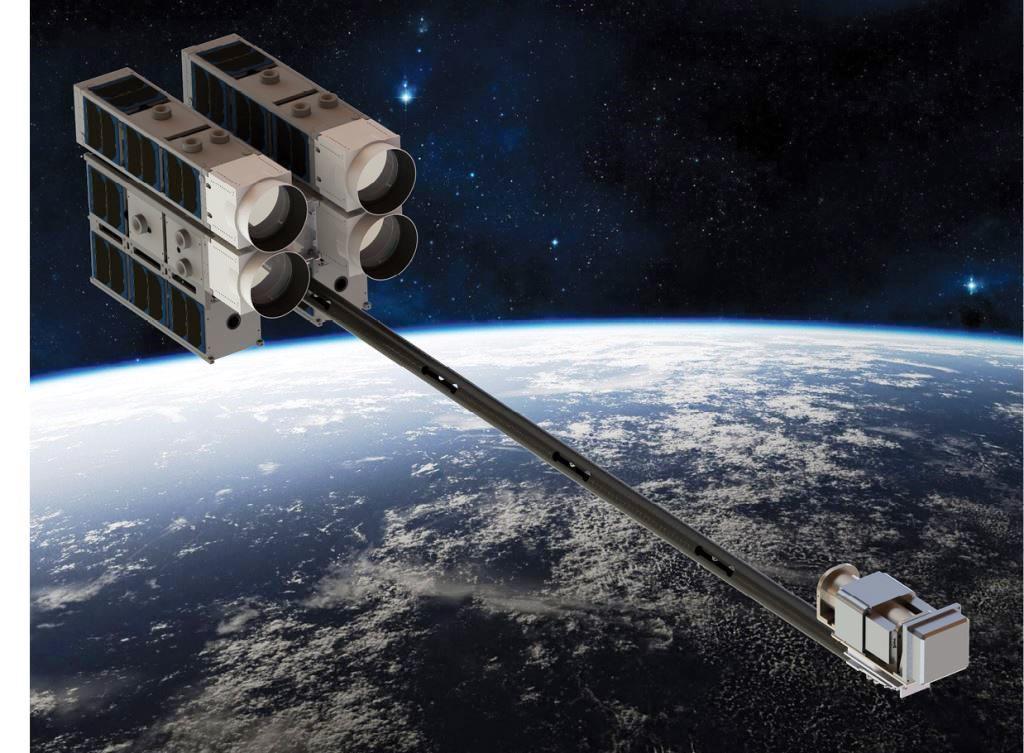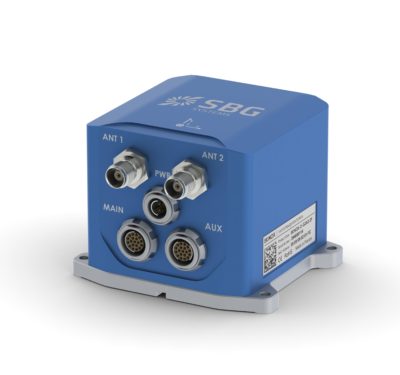
Bigger is often better, not just on Earth, but in space. The larger an orbital observatory, the more light it can gather, helping it capture higher-resolution images and see fainter details. The giant mirrors of NASA’s Hubble Space Telescope, for example, have helped it analyze the skies of planets around distant stars.
The bigger a satellite is, however, the more expensive it is to build and launch. Now scientists are taking the first steps toward creating fleets comprising thousands of autonomous, bread loaf-sized robots capable of assembling themselves into giant spacecraft. This strategy could not only enable the construction of space telescopes bigger than any previously launched into orbit, but a wide range of other structures as well, such as asteroid miners able to extract precious metals or solar power stations that could beam energy down to Earth’s surface.
Satellites are typically limited in size by the rockets and other launch vehicles used to lug them or their components into space. Space observatories that focus on radio waves have less of an issue because they can use antennas that unfold in orbit. However, space observatories that capture visible and infrared light typically require mirrors to do so, and developing foldable mirrors for those wavelengths is complicated when it is even feasible.
For decades, researchers have suggested launching many tiny spacecraft into orbit that can then assemble themselves into large structures. Now scientists are on the verge of launching tiny satellites they propose could one day converge to form a Giant Orbiting Astronomical Telescope (GOAT) more than 100 metric tons in size. In comparison, the Hubble Space Telescope is about 11 metric tons, and the International Space Station has a mass of roughly 420 metric tons.
Go Big
The GOAT’s design comprises two ring-shaped mirrors that can work in sync to act like a single mirror 25 meters wide for gathering visible and near-infrared light. The Hubble Space Telescope’s primary mirror is only 2.4 meters wide, while NASA’s upcoming James Webb Space Telescope will have a primary mirror 6.5 meters wide made from 18 hexagonal segments.
GOAT could potentially image structures on Jupiter that are just 10 to 20 kilometers in size and features 200 kilometers wide in the Kuiper Belt some 50 times farther from the sun than Earth. Similar platforms could watch Earth for continuous, real-time, high-resolution observations, said Craig Underwood, head of the planetary environments group at the Surrey Space Centre at the University of Surrey in England.
One strategy for constructing GOAT would use a hub satellite with a robotic arm to assemble relatively “dumb” mirror elements together. Another would have relatively “smart” mirror segments, each capable of flying autonomously to assemble around a hub satellite.
The scientists said smart mirrors might prove wasteful, in that each would spend most of its life as part of a whole instead of as an autonomous spacecraft, making its propulsion, power and computational systems largely dead weight in the finished space telescope. However, they noted that because smart mirrors are more independent, launches of them could be distributed over time to spread out costs. Ultimately, they suggested building GOAT might incorporate a combination of these approaches.
If each of GOAT’s mirror segments is an autonomous hexagonal spacecraft 10 centimeters wide and 6 kilograms in mass—about the size of the CubeSats now frequently deployed in orbit—the researchers imagined that about 14,000 smart mirrors would be needed for the space telescope. In addition to a central hub satellite that holds GOAT’s lenses as well as power and other key systems, several mobile “helper satellites” would be needed to assemble elements such as the trusses holding everything together.
The researchers plan to employ a radio-frequency WiFi-like wireless communication network to help coordinate smart mirror activity during assembly and operations. Getting many small mirrors to act like a single big mirror requires scientists to control the shape and position of each small mirror to a precision of about 10 nanometers, or roughly ten thousand times thinner than the average width of a human hair. “To do this with a large number of mirror elements is no easy task!” Underwood said.
All in all, the researchers said GOAT would have a mass of roughly 112 metric tons, requiring 17 launches with United Launch Alliance Delta-IV Heavy rocket, with launch costs alone reaching about $5 billion. However, the scientists added that using SpaceX’s new Falcon Heavy rocket might slash launch costs by two-thirds, based on current price estimates.
The scientists envision that GOAT would orbit at geostationary altitudes of roughly 35,800 kilometers. This would make GOAT close enough to Earth to enable potential repair, upgrade and refueling missions.
Many research teams have previously suggested assembling large space telescopes from smaller modules in orbit. For example, in 2006, scientists at NASA’s Goddard Space Flight Center suggested the Thirty Meter Space Telescope, which would be assembled by robots, astronauts or a combination of both. In 2016 researchers at the California Institute of Technology and NASA’s Jet Propulsion Laboratory proposed a 100-meter-wide, robotically assembled space telescope.
However, GOAT has an advantage over those past concepts; there is already a project in the works that could make it a reality—the AAReST (Autonomous Assembly of a Reconfigurable Space Telescope) mission, said Sergio Pellegrino, a senior research scientist at NASA’s Jet Propulsion Laboratory.
NASA’s AAReST Mission
Underwood, one of the principal investigators behind AAReST, has worked on small satellites for more than 30 years and has had “a long-term interest in investigating how small-satellite technology can be used to sense our world and to look beyond, out into the solar system.” He was the chief architect of the SNAP-1 mission, the United Kingdom’s first nano-satellite, “which showed the potential for small satellites to maneuver and inspect others, and following this, I worked on PalmSAT, a very small satellite that could be used in swarms.”
At Surrey, Underwood began developing a concept for satellites to dock together using electromagnets. In 2009, he presented this work in California, where he met Pellegrino, and “AAReST was born,” Underwood recalled.
AAReST will test some of the autonomous rendezvous, docking maneuvers and optical technologies needed for GOAT and other future modular satellites. It will possess two mirror segments that can detach from the core satellite and use butane thrusters to maneuver themselves onto new locations on the spacecraft. Electromagnetic clamps will help each segment dock.
The “active” mirrors that AAReST uses each consist of thin smooth glass bonded to ceramic shells that are piezoelectric—that is they change mechanically in response to electricity. AAReST’s camera senses the shape of the mirrors and applies an electric field to alter their shape if needed, Pellegrino said. One difficulty the researchers faced in manufacturing these mirrors was the miniature high-voltage electronics they needed were not commercially available, “and we had to develop them ourselves,” Pellegrino recalled.
To permit autonomous behavior, the researchers investigated two different kinds of proximity sensors—one using a modified version of the commercial Softkinetic DS325 LiDAR camera, and the other employing a strategy Underwood developed involving infrared LEDs and machine vision techniques. Although they found the LiDAR system worked well in subdued light, it was prone to getting blinded by the intense sunlight encountered in space, Underwood said, while the infrared LED-based system could work “even when the sun was in the field of view of the camera.” In flight, AAReST will use a combination of both systems to give the best estimates of position and range.
AAReST’s control algorithms run on Raspberry Pi Compute modules, and a wireless radio link will connect its core satellite with its mirror segments so the core satellite can record and relay telemetry data during the mirror segments’ autonomous maneuvers. “This link also allows commands to be sent from the CoreSat to the adaptive mirrors carried by each MirrorSat, so that their shape can be adapted to give a sharp focus in different configurations,” Underwood said.
Developing the electromagnetic docking system was much more difficult than expected at the beginning, Underwood recalled. “The concept seems simple, but we found that accurately modeling the magnetic interactions between all the components proved to be very difficult,” he said.
To best test prototype docking systems, the scientists relied on virtually frictionless air-bearing tables similar to those used for air hockey games to simulate how spacecraft might drift toward each other in the microgravity environment of space. However, they found that with the initial tables they used, no matter how careful they were, the air jets in these tables generated turbulent currents that disturbed the docking procedures. They later developed their own air-bearing tables consisting of carbon strips with microscopic pores that can provide uniform airflow across their surfaces.
The final version of the AAReST test bed is currently under development at the University of Surrey in England, the California Institute of Technology in Pasadena and the Indian Institute of Space Science and Technology in Valiamala. The spacecraft is due for completion in December, with a launch expected sometime in 2019, Underwood said.
Autonomous orbital rendezvous and assembly missions can have many potential applications besides space telescopes. Asteroid mining could excavate elements rare on Earth’s surface—a single 500-meter-wide asteroid might hold nearly 175 times Earth’s annual platinum mining output, according to research from MIT. Satellites that collect solar power in orbit could beam that energy down to Earth in the form of microwaves, Underwood said, without facing the obstacles that ground-based solar power farms do, such as nighttime or clouds. Other possibilities include spacecraft that could repair ailing satellites, Underwood said, or remove dangerous space junk.
Orbital assembly may indeed be the future of space. NASA is now examining “the potential of in-space assembly and manufacturing for future NASA missions,” Pellegrino said.
Small, autonomous spacecraft could one day self-assemble in orbit into giant satellites capable of observing distant stars, monitoring the Earth, mining asteroids or beaming energy homeward.






